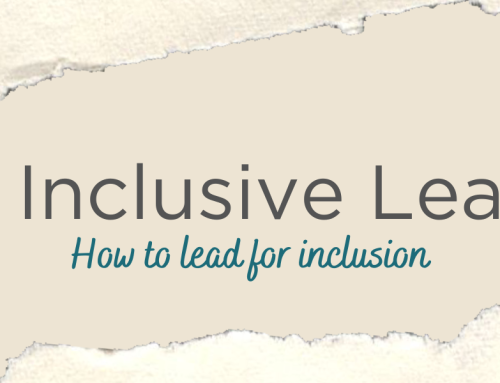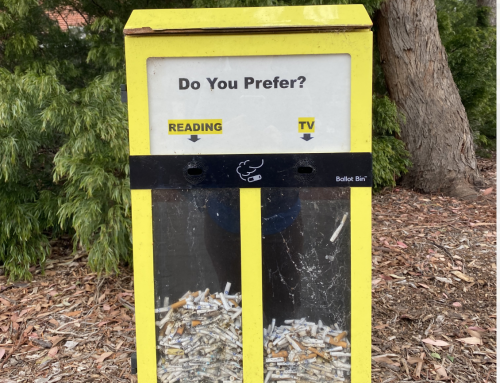What is leverage?
To move something with less force for greater impact and movement.
It makes movement easier.
This is what I’ve discovered about leverage in leadership skills.
There are three areas that we seem to struggle most with that just a little bit of learning can go a long way. Leveraging these skills can make a bigger difference in a wide array of areas, most notably, workplace culture.
The three skills are 1) feedback: giving and receiving, 2) difficult conversations and 3) professional boundaries.

Feedback: Giving and Receiving
This is an area that gets plunged into the ‘too hard basket’. Giving positive feedback is often ok, but we struggle to be on the receiving end of it. Negative feedback is a challenge; both receiving and giving.
What we don’t realise is that without a balance of different kinds of feedback our positive words mean less. It’s a bit like how saying “no” gives more meaning to our “yes”, but more on that when we talk about boundaries.
The damage I’ve seen from feedback delivered poorly or avoided altogether is heartbreaking. Small improvements in this area can make a big difference.
Two feedback tips
- The next time someone gives you a compliment or says something positive about you or your work, take a moment, breathe it in, and graciously accept it. See how natural or awkward it feels and trust me when I say that the more you do it, the easier it gets.
- The next time a colleague doesn’t meet your expectations, get curious. Note the impact of the gap between the intention of their actions, and the outcome. See if you can have an exploratory conversation where you share the impact in a way that helps them understand rather than blames them. See if you can find a way to work together to resolve it, offer support as needed. Asking how you can help with a situation rather than jumping to solutions might sound simple but can have a huge impact.
Receiving feedback well and seeking out opportunities to improve are associated with improved job satisfaction. Creating an environment that normalises feedback-seeking can turn what we once avoided into an everyday practice. It’s like a muscle that becomes stronger with regular activity.
Difficult conversations
These are, by definition, a task we avoid. And the damage we do as a result is something we completely put out of our mind and often deny it. At times it will come into our awareness at the times we least expect, like staring out a window or trying to get to sleep. It seems too hard so we pretend it isn’t there.
Let’s interrupt this cycle. This is where small actions can make a big difference. You can have that conversation. You are more capable than you believe. You are more courageous than you believe.
Trust me. I’ve seen it time and time again. When I work with clients to have the conversation, they always come back with “That wasn’t as hard as I thought it would be.”
It’s natural to take the path of least resistance but to face these challenges is well, leadership. It feels better to take responsibility than to resist it.
Tips for difficult conversations
- Take time to reflect on the situation. Make some notes about how you’d like the conversation to go. Identify the purpose and desired outcome. Consider what will produce that outcome, and what you can bring to it that will support your intention.
- Think about how you want to feel at the end of the conversation, and how you want the other person to feel. What qualities will help make this happen? Sensitivity? Compassion? Empathy?
- Contact the person and make a time to talk, be clear about the purpose. (You don’t need to share the whole process with them, the purpose is enough.)
- Before meeting, review your notes about how you’d like it to go, how you want each of you to feel, and take a minute to embody the qualities you feel will bring that about. Be real and honest with yourself and be sure you’re not inadvertently using this as an excuse to be nasty or condescending. Focus on the desired outcome.
- When you’re face to face or on video chat (avoid voice only, empathy is easier when you can see each other) be honest about how you’re feeling, if it’s hard for you to say what you want to say, don’t pretend it’s not. Reiterate the purpose and what you intend.
- Listen first to understand, then to be understood. (Thank you Stephen Covey, Habit 5)
- Listen some more.
- At the end, thank them for taking the time for a real conversation, acknowledge them for the way they contributed.
Boundaries
Most people I know don’t believe they are very good at boundary setting and probably less so at maintaining those boundaries. In a professional setting, sometimes it can be more clearly delineated but it doesn’t always make it easier.
Having strong boundaries removes ambiguity about what kind of behaviour is ok and what isn’t. Weak boundaries or those set and unenforced, send a signal that there are no consequences for inappropriate behaviour. It creates a grey area where a clear line could be.
With behaviour being the essence of how culture is demonstrated in a workplace clarity is key. In fact, Brene Brown says, “Clear is kind. Unclear is unkind”. What she means is that we think we’re being nice but what is actually kind is to put ambiguity to rest and be clear about what behaviour is ok and what’s not.
Leaders are defined both by what they permit and omit. Letting things slide and not addressing what’s inappropriate or even those grey areas indicates there are no boundaries.
What boundary-setting looks like:
EG1 “Hey I know you’re stressed but that isn’t any way to speak to your colleague.”
EG2 “Did you use the microwave last?” “Do you think it’s ok to leave it that way?” “Do you mind leaving it as you found it? We tidy as we go.”
The message is, “Take note of how we do things around here.” This is how healthy workplace culture happens and is reinforced.
Here are some examples of poor boundaries.
EG1 You hear someone sharing information that should be kept confidential and can’t think of a way to address it so you convince yourself it’s probably harmless and really, none of your business.
EG2 “Sorry I’m late.” “That’s ok.” Or late arrival (especially a consistent lateness) goes unacknowledged.
Instead, start the meeting on time and late arrivals are acknowledged, welcomed and invited to help keep things on track by arriving on time. (Also an opportunity for having that conversation you’ve been putting off.)
Leverage Respect and Trust
It’s easy to think that you risk losing respect or that people won’t like it when you set a boundary or name inappropriate behaviour. Trust me when I say that people will respect you and be glad you said something. Letting it go is going to put your trust and respect at risk more than being clear about what’s ok and what isn’t without shame or blame.
The more you can incorporate these practices and get better at them you’ll begin to see what I mean by leverage and how doing those small things can have a much bigger impact in the long run. You don’t have to be the boss to make a positive impact on workplace culture. We are all responsible for giving and receiving feedback, having difficult conversations and setting boundaries.
In a time when trust is low, any improvement makes a difference. Stepping up and skilling up in these areas goes a long way to improve the relationships, build trust and respect. This is leadership.















Leave A Comment